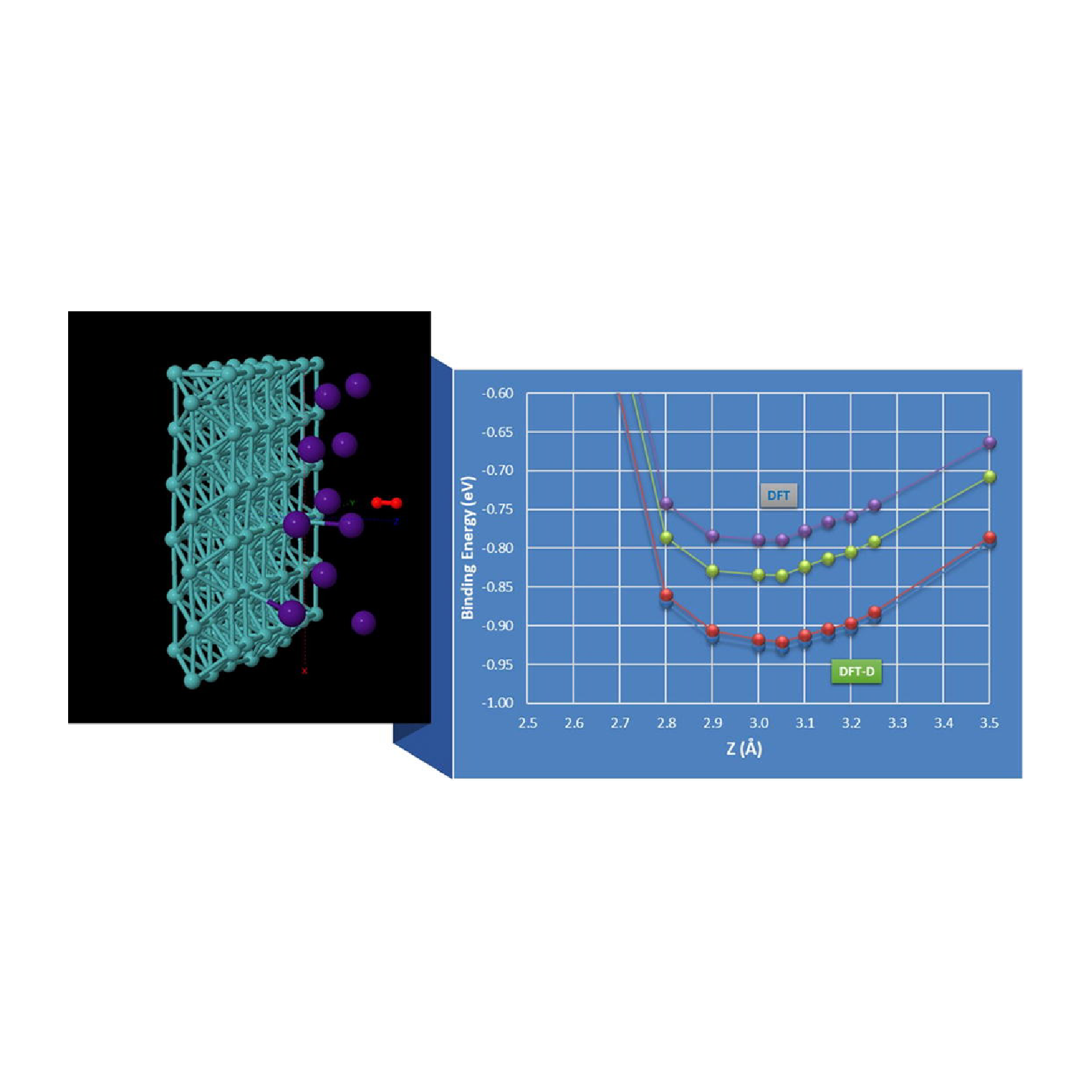Dispersion energy effects on oxygen interaction with cesiated molybdenum surfaces
Sanna N.; Rutigliano M.; Palma A.
We studied the interaction of a medium coverage cesiated molybdenum surface with atomic and molecular oxygen by DFT-D method for singlet and triplet electronic spin states. Dispersion forces account up to 15% of the binding energies and provide a correct behaviour of the long-range interaction. No curve crossing was observed and the triplet electronic spin state of O/O2, being the most stable, was then considered and used to build a reactive surface of O2 impinging on top of one sampled Cs surface atom. For the considered approaching geometry, the barrier estimated for molecule dissociation is of 1.3 eV.
| ID | 453182 |
|---|---|
| DOI | 10.1016/j.cplett.2021.138603 |
| PRODUCT TYPE | Journal Article |
| LAST UPDATE | 2022-02-10 16:10:54.000 |
 English
English  Italiano
Italiano 